
Feel free to add tags, names, dates or anything you are looking for


The Church of the Savior is located near the town of Tsalenjikha in the historic province of Samegrelo. It stands in the middle of a vast courtyard that is surrounded by an enclosing wall.
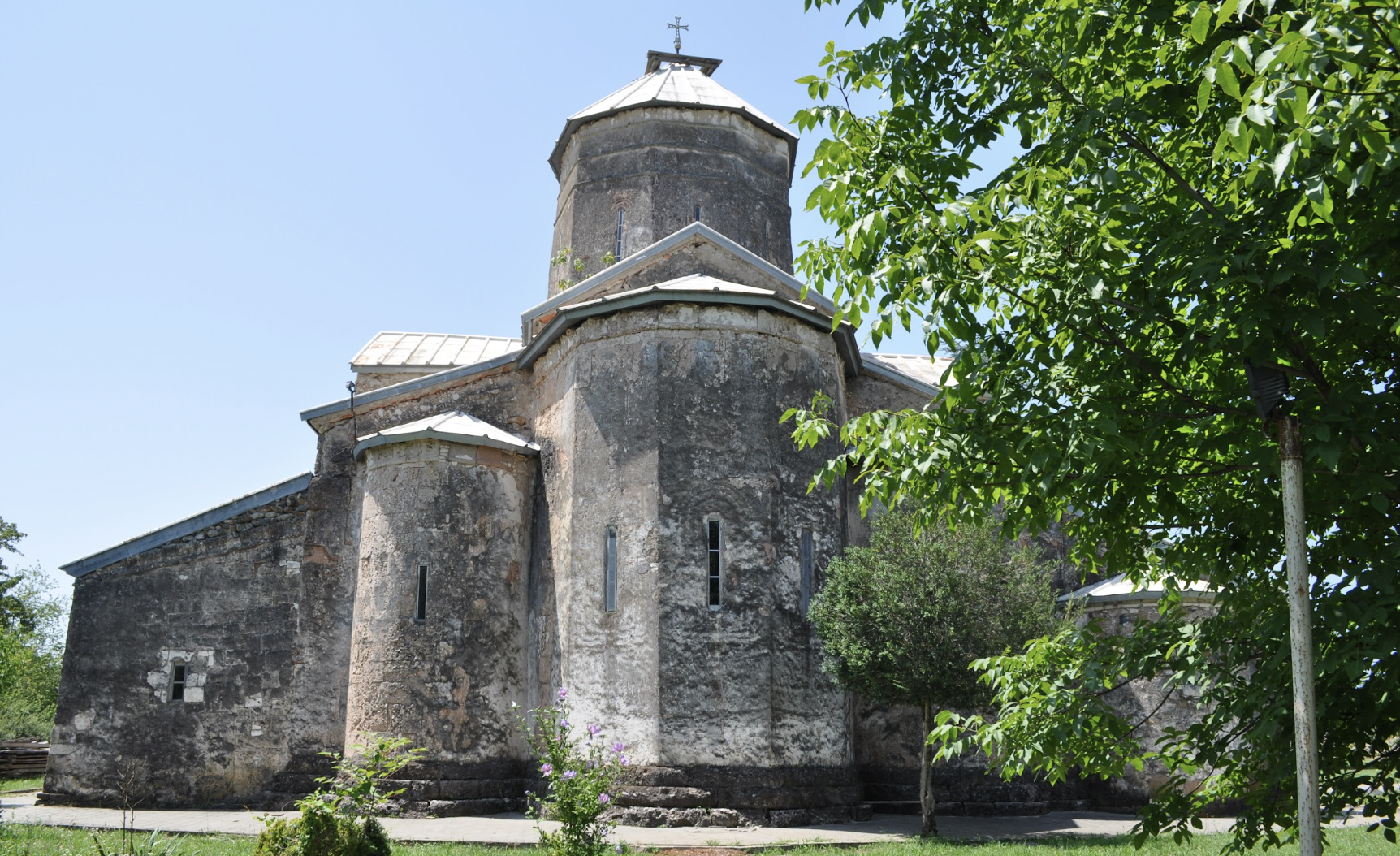
Tsalenjikha Church looking from the east
The exact date of the church’s construction is unknown. On an architectural basis, it has been dated to the middle or second half of the twelfth century. The church has a cross-in-square plan, with a dome resting on the corners of the apse walls to the east and two octagonal piers to the west. Plain pendentives serve to transition from the square central bay to the circular base of the dome. Three apses project from the eastern wall. The façades are faced with conglomerate blocks that are unsuitable for carving. As a result, the church is devoid of exterior decoration.
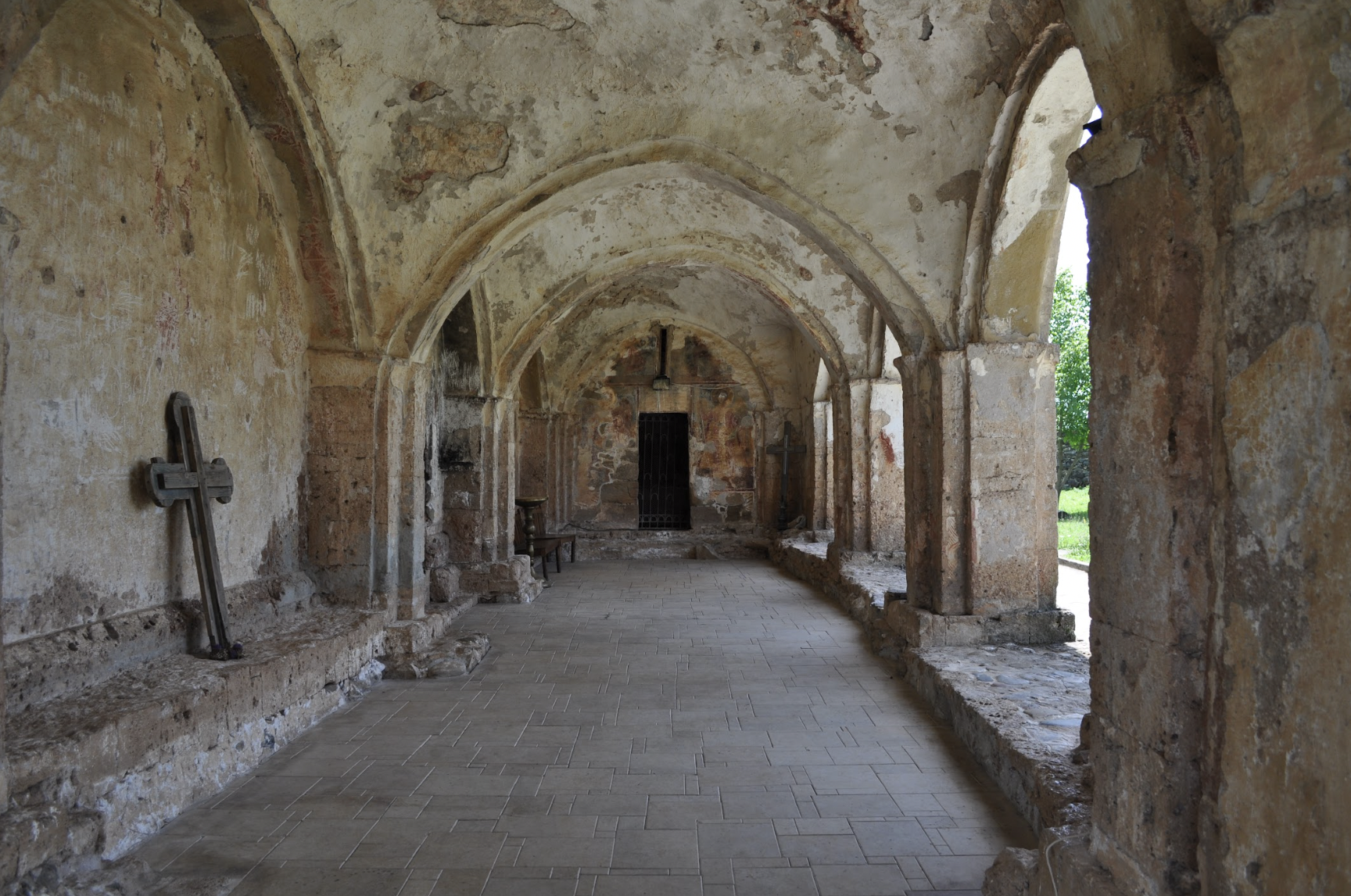
Western porch
In the late fourteenth and early fifteenth centuries, a three-arched porch was added to the west of the church, and galleries were added to the north and south. These galleries were later divided into several private chapels.
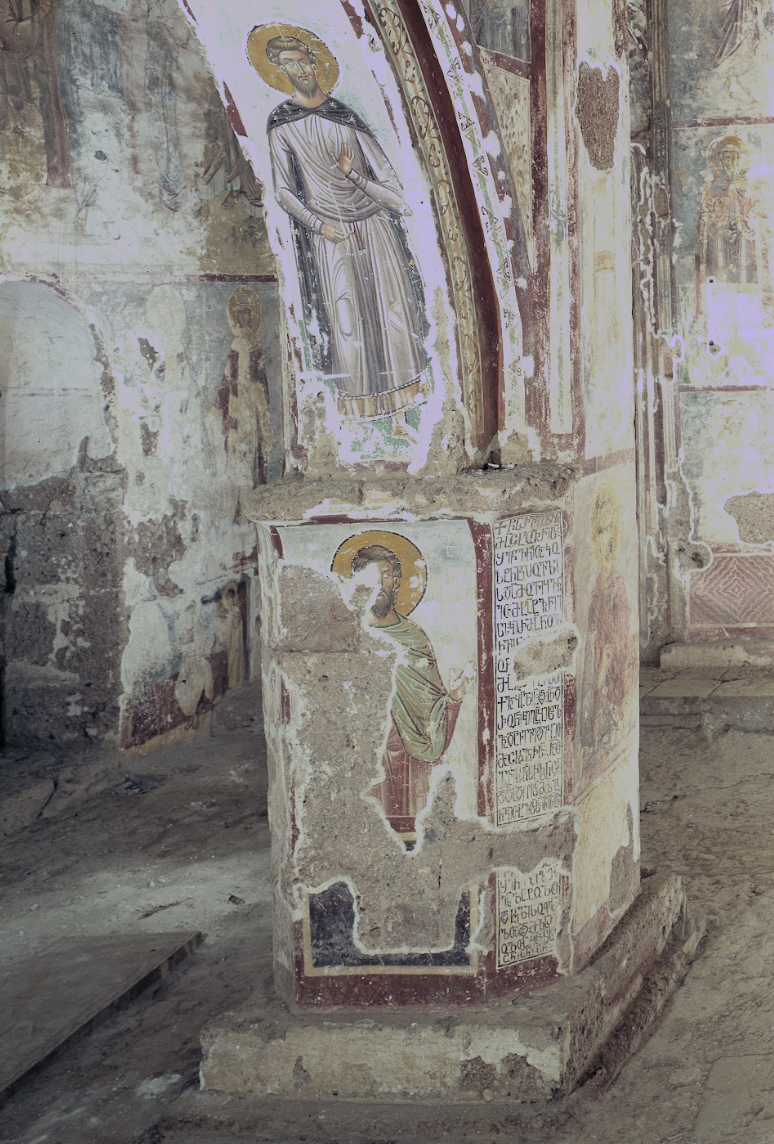
Georgian inscription and images of saints
The church in Tsalenjikha is well-known for its murals, which were painted by Manuel Eugenikos – a notable representative of late Byzantine art. The wall paintings were executed by order of Prince Vameq I Dadiani, eristavi (duke) of Odishi (Samegrelo), who reigned from 1384 to 1396. The artist’s invitation from the capital of the Byzantine Empire is substantiated by two inscriptions in Georgian and one in Greek language in the church interior. The original paintings in the dome and vaults were largely repainted in the seventeenth century.

Image of the Virgin Mary
The sanctuary features a large image of the Virgin flanked by the apostles St. Peter and St. Paul and two archangels. Beneath it, the celebration of the celestial and terrestrial liturgies is depicted. The Communion of the Apostles is illustrated on either side of the apse, on the walls of the chancel bay. Christ Pantocrator with accompanying archangels is portrayed in the dome, while the drum is adorned with images of various prophets and saints.
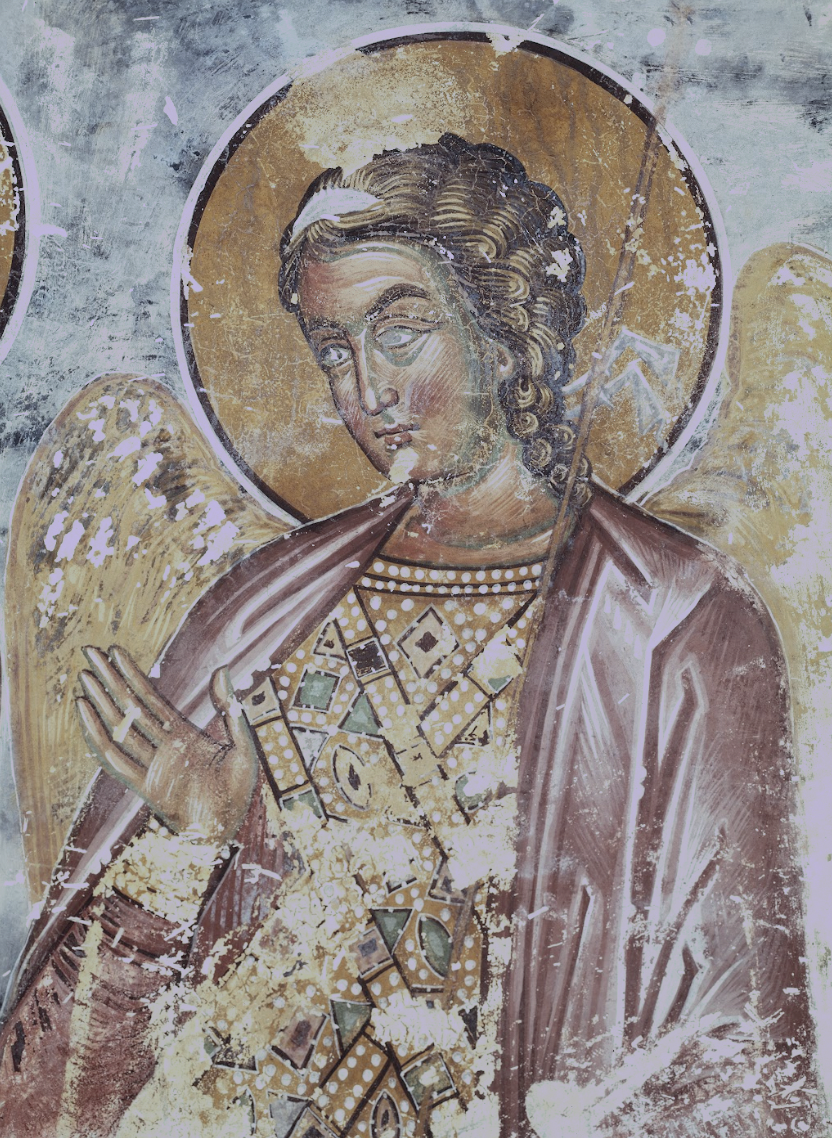
Image of the Archangel
The murals of Tsalenjikha include a large number of life cycles. Along with the Great Feasts, the Passions and Miracles of Christ, the Childhood of the Virgin Mary, and the Lives of St. John the Baptist, St. George, and St. Nicholas are represented. The lower sections of the walls and piers are decorated with rows of numerous saints. Among the latter, the Georgian martyrs David and Constantine of Argveti are portrayed. Portraits of the donor Vameq I Dadiani and his family members can be seen on the lower western section of the northern wall.
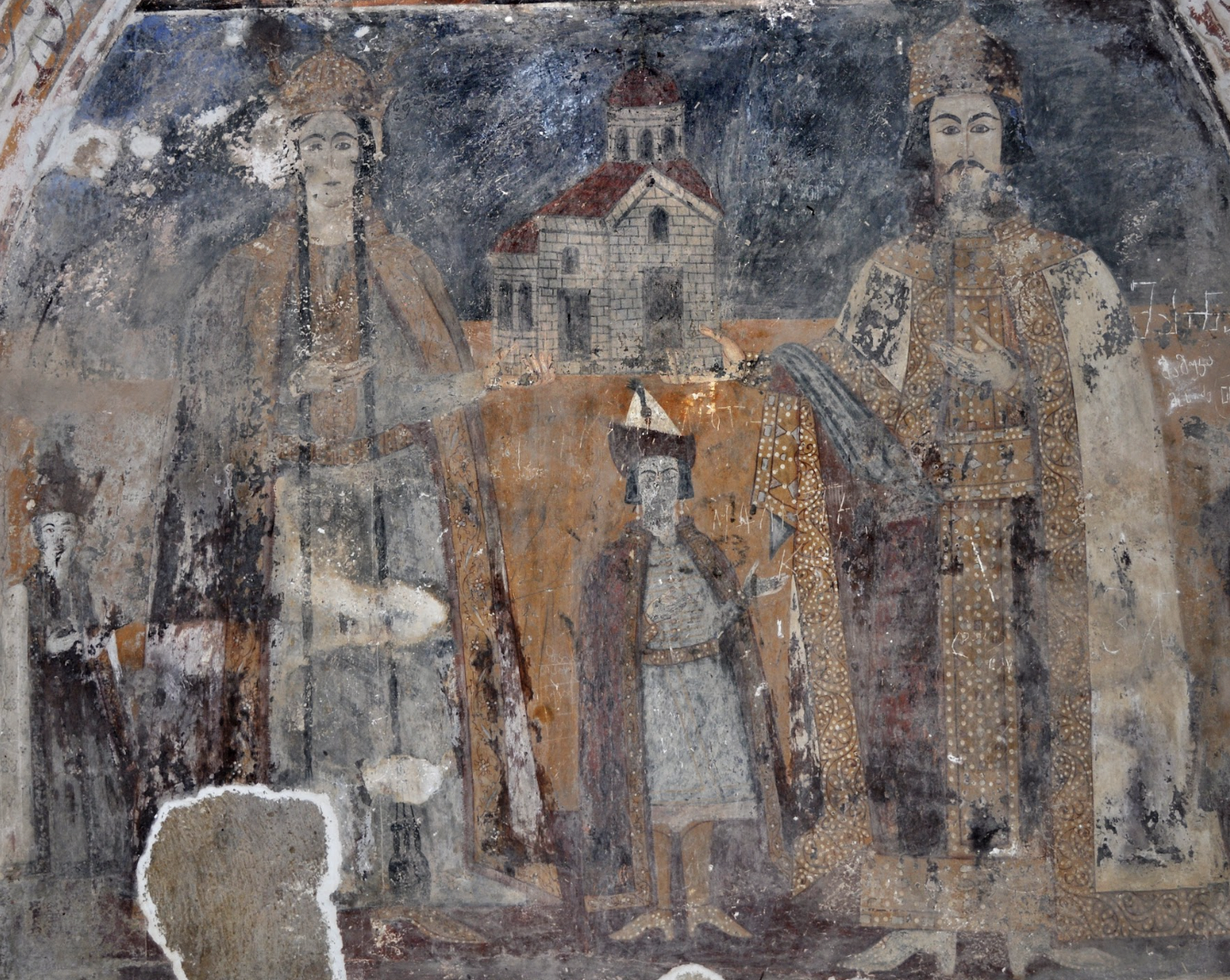
Levan II Dadiani with his family
Wall paintings have also been preserved in the side chapels. In the Chapel of St. George, along with scenes from the life of St. George, images have been included of Prince Levan I Dadiani (1533-1572), who was buried here, and of his household. The adjacent chapel, at the western end of the southern gallery, served as the burial place of Prince Levan II Dadiani (1611-1657), and features his family portrait.
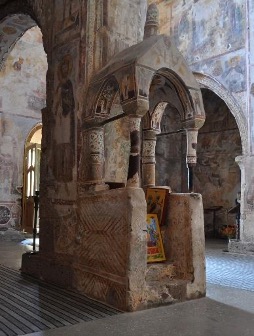
Bishop’s throne
In the 1640s, the Eparchy of Tsalenjikha was established, and the Church of the Savior became a cathedral. A stone throne for the bishop was built to the eastern side of the south-western pier. The eparchy was abolished in the eighteenth century.
A late medieval bell tower and the ruins of a former palace are also located within the church courtyard.